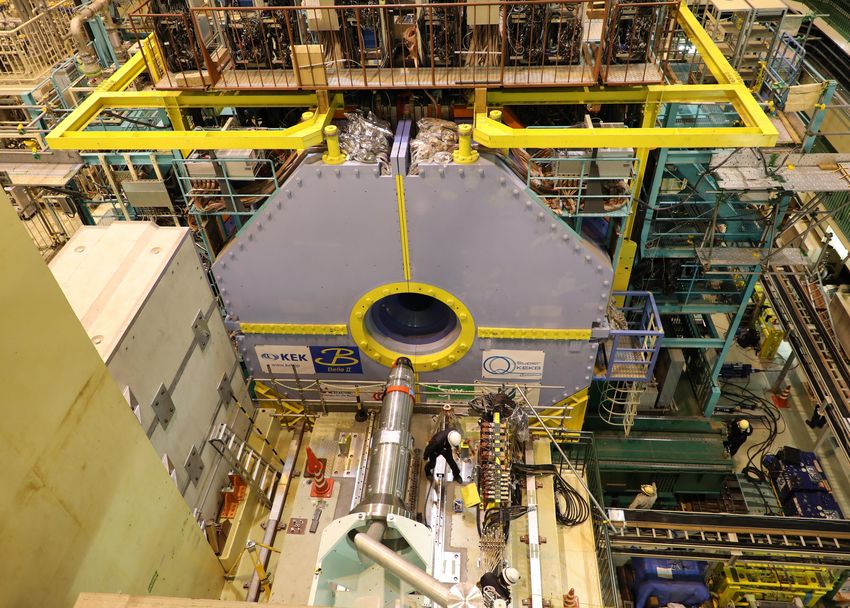The Belle II experiment is an international collaboration hosted by KEK in Tsukuba, Japan. Using a state-of-the-art experimental apparatus, Belle II – the modernized and improved successor of the former Belle experiment – explores the mysteries of the beginning of the the universe.
The Belle II detector precisely measures elementary particle interactions artificially created with the upgraded SuperKEKB accelerator. The term “roll-in” refers to the operation of moving the entire Belle II detector system, following the completion of the assembly and integration of the various components, from its assembly area to the beam collision point.
The total weight of the Belle II detector is about 1400 tons. Belle II was slowly and carefully moved about 13 meters from the assembly point to the beam collision point. The Belle II detector and the SuperKEKB accelerator are now united.
In the Belle II experiment, we will observe various elementary particles generated from high energy electron-positron collisions using the 8-meter tall Belle II detector consisting of seven types of subdetectors; we will investigate the various kinds of elementary particles that emerge from these collisions, The detector will provide mesurements of the direction and momenta of the newly produced particles. Compared to the previous Belle experiment, Belle Ⅱ will allow for the collection of much larger data samples with much improved measurement precision.
More than 700 researchers from the 23 member countries and regions around the world will participate in the Belle II experiment. Their goal is to find a significant "deviation" from the Standard Model of particle physics and perhaps determine which of the many proposed new theories describes the world of elementary particles.
The Max Planck Institute for Physics leads the international working group responsible for the central detector. The so called pixel vertex detector provides high precision measurements right at the collision point.
